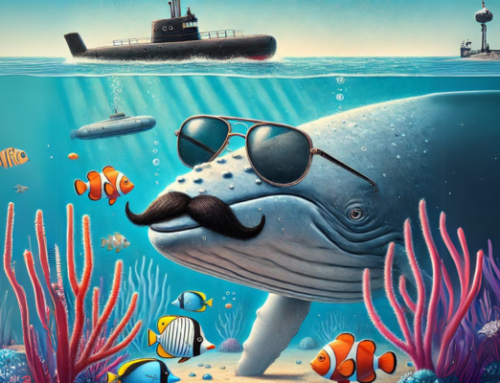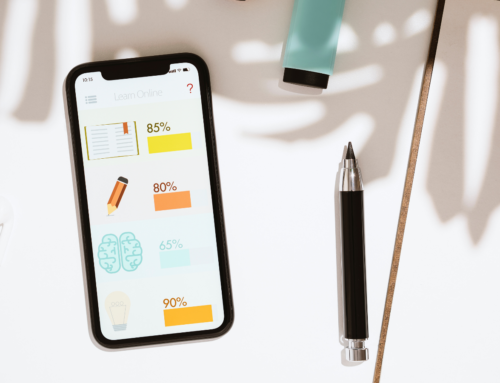5 EdTech Trends for 2022
Pandemic, variant, hybrid learning, are words that we have all read and heard far too often during the year 2021. There is no reason to imagine their sudden disappearance. For all that, the mission of the universities remains intact, while the expectations of a student population that has been badly affected by the health crisis and isolation are as strong as ever. To learn and learn better, to face the world of tomorrow, to express their talents and propose their ideas to all the actors of our societies. This is what everyone wants with impatience. This is what drives the progress of schools, teachers and EdTech companies who together imagine the solutions of the future.
We meet these actors on a daily basis and our exchanges with them enrich us every day. They allow us to discover innovations, uses, and issues that can change the world of higher education and make teaching methods evolve.
In 2022, we believe that 5 major trends will be at the heart of the conversations and projects of the key players in higher education and research.
1 – Immersive Learning or the indispensable AR/VR
While everyone is talking about the metaverse, the virtual universe in which everyone reinvents themselves and finds themselves in order to escape their reality, the learner still needs to learn. To learn from reality, in the sense that his knowledge, his skills and his future usefulness depend on it. Whether at home or on a university campus, immersing them in the reality of a professional context, of a simulated situation, of a mission to be accomplished, can now be imagined through the visualisation of images, 360° and interactive videos. In a helmet, everything is possible and, above all, without limits.
Why is this essential? What are the benefits of this cognitive immersion?
On the one hand, researchers have demonstrated the quality and importance of the impact of such experiences on the human brain, and on the other hand, virtual or augmented reality is a perfect response to the constraints of distance that we experience. Reducing our travel, facilitating access to the most difficult experiences to reproduce, optimising the quality of the knowledge delivered, are major challenges for higher education. However, immersive technologies require means but also a high level of mastery to be effective. This is why we believe in the development of this market, well beyond the fad that some have denounced. Simulating an open-heart operation, repairing an electric shutter motor or piloting an evacuation operation in a building, allows you to experience real-life situations with all the benefits of memorising the gestures or practices to be followed. There is a definite gain in attention for those who are « immersed » in these simulations, which has quite rightly become a crucial subject for teachers.
Learning gestures, postures, words and understanding the issues at stake in different contexts is a strong requirement of our educational system. Making the learning experience immersive will make it easier to access and more effective.
2 – Gamification in education
As we wrote a year ago, playing is a learning engine for human beings:
We learn to play from an early age. Many games are considered educational, allowing us to learn while having fun, acquiring skills without even realising it. And yet, the older we get, the more this playfulness in lessons is lost, until it disappears completely. The digital transformation in higher education, which we are currently experiencing, is expanding the possibilities for learning, creating engaging and playful interactive environments.
Read our article on gamification here
So why will gamification still be a trend in 2022?
If the fundamentals do not change in the face of crises, it is also because what most easily brings a community together is the playful experience. Around the game, there is conviviality, exchanges, friendly and benevolent confrontations. Playing is also about loving life. Thus, it can be particularly useful to use games (board, video or role-playing) to disseminate, illustrate and explain a concept, but also to create game mechanisms around learning. Nothing seems more attractive than an emotional reward to stimulate learners’ brains!
A number of players will therefore continue to investigate gaming techniques to enrich educational systems. This is an expectation expressed by all those who wish to motivate students who have become very attached to gaming. In the United States, for example, with more than 100 million monthly players, the Roblox game platform is now even more important than Minecraft. It is used worldwide to teach programming and game design.
In France, pioneering academics such as Jérôme Legrix-Pagès at the University of Caen-Normandy and Laurent Aldon at the University of Montpellier are already creating their own games.
3 – The emergence of microlearning
Microlearning is one of the hottest trends in e-learning today. Organisations need to know not only what microlearning is, but also how to create it and what best practices to employ. It is not about cutting a 3-hour course into 3-minute chunks. Instead, it is important to understand that this technique allows the learner to focus on one concept, one key topic to understand and remember before moving on to the next step. Sequencing of learning is a new technique that is particularly suited to distance learning and disparities in availability. Devoting a few minutes each day to learning a language, or a computer programming manual, allows everyone to progress at their own pace. Remember that microlearning uses all formats of knowledge dissemination: video, text, audio, etc…
The immense freedom afforded by microlearning should broaden the learning public and multiply the educational effort. The idea of building courses by episode, by season, is naturally inspired by the development of « series » consumption. Discovering the next episode is a source of pleasure for those who want to learn. One might think that microlearning is more geared towards a lifelong learning audience, but the various higher education institutions are increasingly considering this learning technique as a complement to more traditional teaching methods to enable students to revise in a different way.
Wooflash is one of the leaders in this emerging market, for an example of use by a medical professor with his students:
4 – Peer review or the apology of peer to peer
One of the keys to learning remains assessment. Measuring allows for progress. But traditional methods are often called into question, at a time when acquired skills are valued. But do these assessments correspond to expectations and needs? Should we continue to test knowledge acquired when what we really want is for students to acquire skills?
Mobilising the skills of our peers who have certain knowledge and skills recognised by their profession, in order to disseminate or evaluate them among learners, is a new avenue to explore. More neutral, more up-to-date, more respectful, peer-to-peer sharing has many advantages for the future. Computer science schools such as Ada Tech School and Ecole 42 have implemented these tutoring-like techniques but warn that peer-learning is not the magic answer to teaching.
For its part, ChallengeMe, a digital peer review platform, defends this idea by emphasising the benefits of collective intelligence and knowledge sharing for the learner. Several universities have already experimented with this approach in the context of certain courses, such as Paul-Valéry Montpellier 3 University and the University of Lorraine.
Its co-founder, Ludovic Charbonnel, explains his vision in an interview we published last November:
5 – Towards greater flexibility in learning
Technology is undoubtedly bringing more flexibility to our professional lives and the same can be said for our lives as learners. A new expectation expressed by learners is naturally that they should be able to freely dispose of their time and no longer be constrained by rigid, time-limited courses.
Even if there are already possibilities to modulate the learning time for some degrees, this is usually reserved for specific audiences, in particular circumstances. Nevertheless, some degrees, most often delivered online, are opening up to greater time flexibility for their learners. This is notably the case for the MBA (100% online) of the Birmingham Business School, which can be taken over a period of 2,5 years to 5 years, depending on the learner’s choice. With the development of more streamlined e-learning tools and the use of video conferencing alongside other tools, Mr Andrew Parker, Director of Digital Education and Distance Learning at Birmingham Business School, believes that « people will be able to continue their education when, where and at the pace that suits them best ».
However, when we talk about this notion of flexibility, it is important not to focus on the courses but on the new technologies to be deployed to enable the pedagogy to be better adapted to its audience.
In conclusion, we wish you agility in 2022, as the context and situations are changing. Fortunately, technology is advancing rapidly and enabling all higher education actors who wish to do so to meet the challenges they face. It is still up to those who drive the knowledge economy to follow or create the trends, and universities are at the forefront of this!






